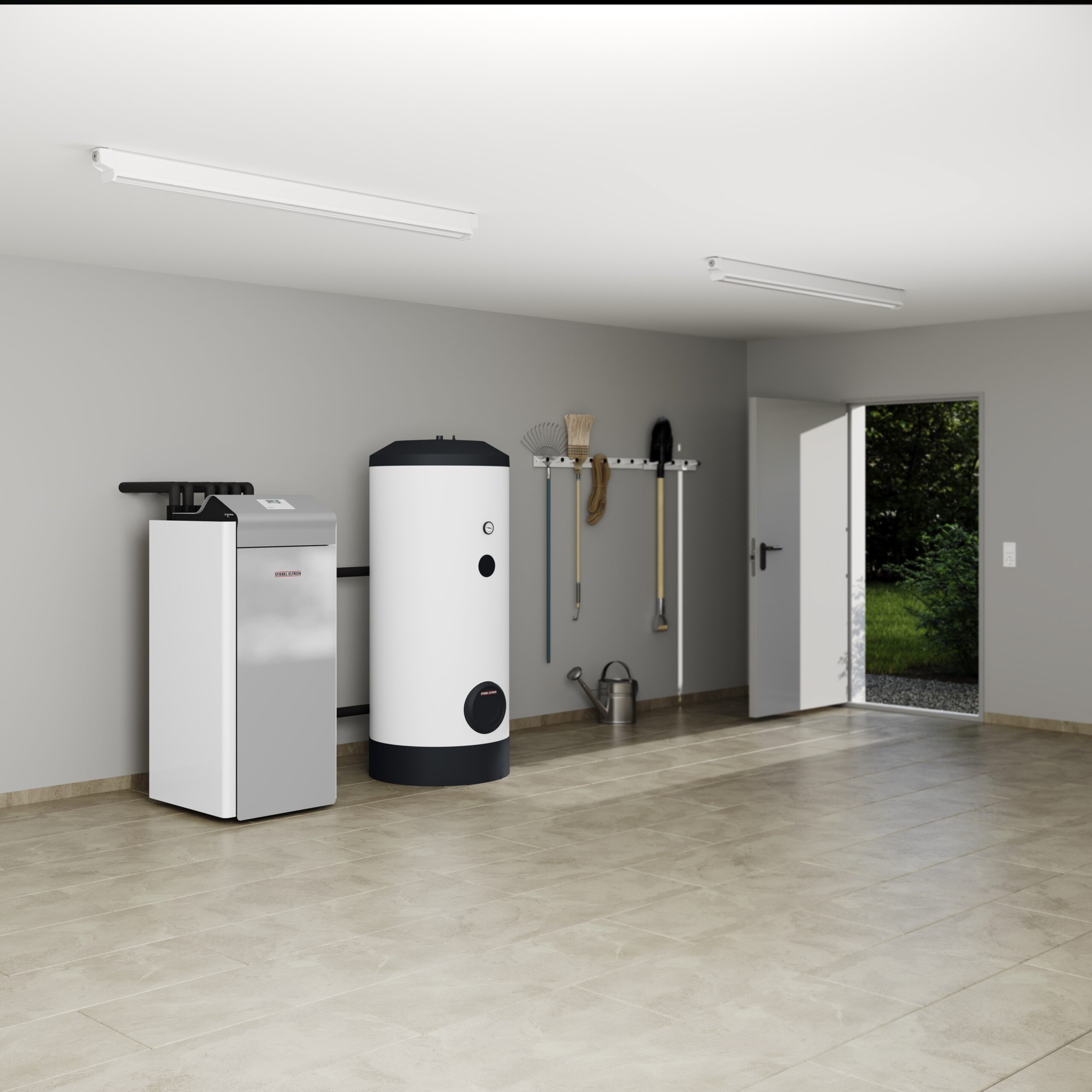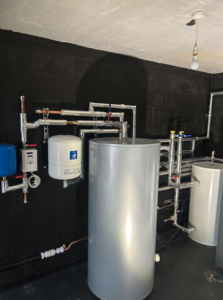
How to reduce your carbon footprint and save money on heating bills with a renewable energy system
Ground source heat pumps (GSHPs) are a type of renewable energy system that use the natural heat stored in the ground to provide heating and hot water for your home. They work by circulating a mixture of water and antifreeze through pipes buried in the ground, which absorb the heat from the earth and transfer it to a heat pump unit. The heat pump then compresses the fluid to increase its temperature and delivers it to your radiators, underfloor heating, or hot water tank. GSHPs can also provide cooling in the summer by reversing the process and transferring heat from your home to the ground.
The first step towards installing a ground source heat pump is to design the system to ensure that you get the right heat pump to supply the heating requirements of your home. With a new build home this can happen at the stage of architectural drawings to allow enough space to be allocated for all the plant and ground works required.
For properties where a heat pump will displace an existing gas boiler, the design will start with a desk top study and/or a site visit. This will assess the suitability of your home and cover any changes you might wish to make to your existing heating system or insulation you might want to put in place to lower energy bills and reduce carbon emissions.
A system design will be drawn up and costed by your heat pump installer for your approval. Once you have accepted a quote installation will progress at an agreed date. Typically installation takes a couple of weeks from start to finish with all of the ground works, the installation of the pump itself and the associated parts like a hot water cylinder, buffer tank, circulation pumps and controls.
Installing a ground source heat pump requires careful planning and consideration, but the process is straightforward with our professional guidance. You’ll need adequate space for the ground loop system, either horizontally or vertically, depending on your property’s layout.

Average gshp installations require 200 sqm of horizontal ground array or vertical boreholes.
Ground source heat pumps also require indoor space for plant room as both the heat pump itself and cylinders will be housed indoors.
One of the questions we are often asked is how much maintenance ground source heat pumps require. Heat pumps are generally fairly low maintenance. That said, you should carry out annual check-ups maintain efficiency and validate your warranty.
A typical annual service will include things like cleaning of filters to ensure optimal operation of the heat exchanger, a general review of the operating status of all components, a software update and a review settings for efficient operation and energy efficiency based on the performance of the system in the previous year.
Ground source heat pumps extract heat from the ground or water for heating your home and hot water. A ground source heat pump can be a great investment for a home.Ground source heat pumps offer a reliable, long-service-life renewable energy solution with the advantages of low running costs and a reduced carbon footprint for your home.
Gshps are typically the most efficient and quietest, though more costly to install initially than ashps. The higher initial costs may be offset in future years by lower energy bills. They are most efficient paired with low temperature heating systems.
For further information please contact us.
Our Reviews